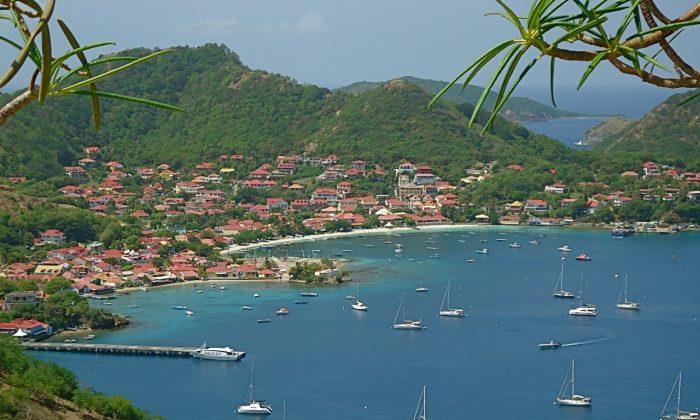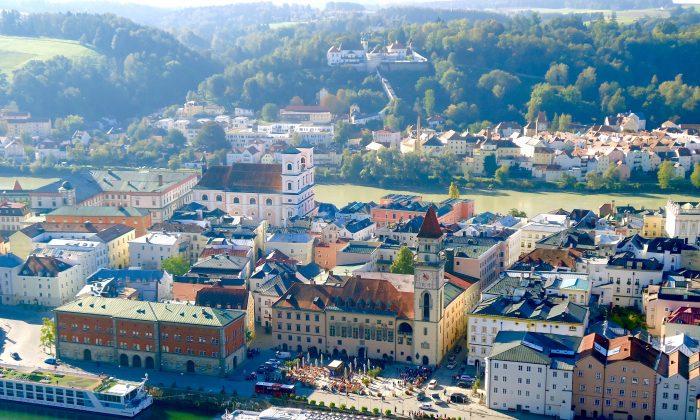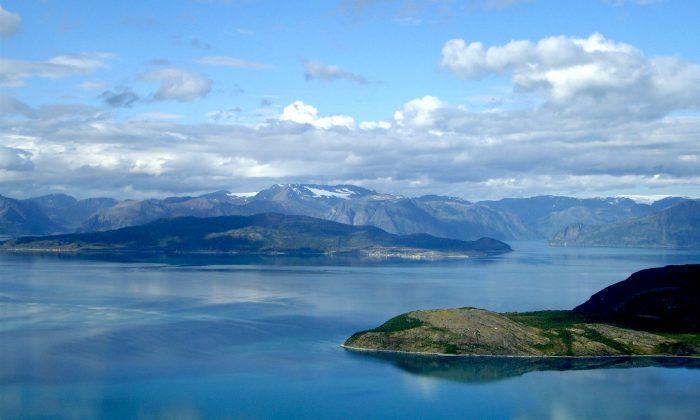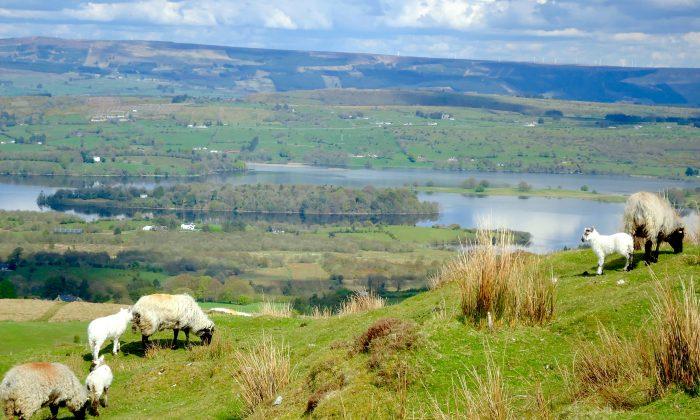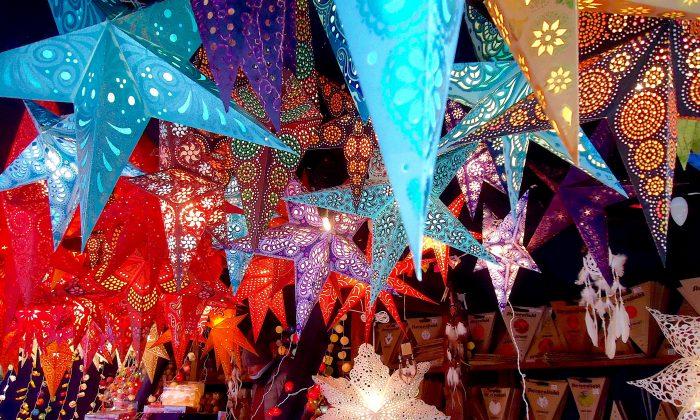It’s easy to find the island of Guadeloupe on a map. In the middle of the Lesser Antilles—a chain of tiny islands that arc across the southern Caribbean—it’s the butterfly floating on the ocean. Really two islands divided by an estuary, Grande-Terre forms Guadeloupe’s northern wing and Basse-Terre its southern.
But the butterfly has a richer symbolism for the island than just its shape. In its brilliant hues, fusion food, and joyous spirit, today’s island culture is a butterfly that emerged from the dark days of sugarcane plantations and slavery.
Guadeloupe is an island full of colour: chartreuse, saffron, and lemon walls under red tin roofs, and iron balconies painted white against turquoise and mauve houses. Exotic flowers bloom in confetti-coloured splendour in every corner.

Guadeloupe National Park
Early in the morning over breakfast on the veranda of the Auberge de la Vieille Tour Hotel, I watched pelicans skim the waves hunting for their breakfast. In the distance a graceful sailboat glided along the horizon.
The day was perfect for a walk in the clouds and together with guide Marc I headed for Guadeloupe National Park, a vast stretch of rainforest that climbs the foot of a semi-active volcano, La Soufriere. The park has been chosen by UNESCO as an international biosphere reserve and it sprawls over most of the interior of the butterfly’s southern wing.
Climbing through tree ferns that towered overhead and long shoots of blooming red and yellow heliconia, the croaks of frogs in the dense undergrowth drowned out the calls of birds. A bridled quail-dove with a red beak and iridescent neck delicately picked its way across a flagstone that contained the fossil of a plant that flourished here a million years ago. Orchids grew like weeds beneath trees that soared almost 100 feet above. Just beyond was a waterfall splashing into a clear turquoise pool. The temptation to jump in was great but the mountain was waiting.
As we climbed higher, dozens of streams poured down through the undergrowth. Nearly 300 rivers crisscross Guadeloupe, bringing enough water to nourish its banana, sugarcane, and pineapple plantations and to share with its less fortunate island neighbours through an undersea pipeline.
True to the island’s shape, yellow and white butterflies flitted across our path and danced in the fern forests. When I asked Marc about the possibility of unfriendly critters prowling in the undergrowth, he told me not to worry. The largest mammal on the island is the raccoon.
After a strenuous climb we reach the savannah at the foot of the volcano and at that moment the clouds cleared. “You are lucky” Marc said. “La Soufriere is sleeping today. When you reach the summit, you can hear her snore.”
From where we were standing the lady looked peaceful enough but on the other side of the summit fumaroles belched columns of steam into the air and sulfur gushing from deep in the earth coloured the ground yellow.

Les Saintes islands
Guadeloupe is a department of France and includes a number of smaller islands only a short boat ride away. With guide Danielo, I set off the next day by hovercraft for the eight tiny islands of Les Saintes, only two of which are inhabited.
Les Saintes has a unique history, having been settled by French colonists from Brittany who brought their fishing culture with them. Landing in Terre-de-Haut, the easternmost island, we stopped to buy a bag of special cakes called Le Tourment d'Amour (the Torment of Love), a traditional confection baked, so the legend goes, by sailors’ wives waiting for their husbands’ return from the sea.
From the little port it was a long way to the top of the island where Fort Napoléon stands, a grim volcanic bastion built in the 19th century to symbolize French domination. Now a museum, the ramparts of the fort are planted with succulents and cactii and are known for their elusive iguana population. After a hot stroll among the succulents it was a relief to take the minibus to Pompierre Beach for a swim where the Caribbean meets the Atlantic in a crystal clear bay.

Memorial ACTe museum
In 2015 Guadeloupe inaugurated a new museum, Memorial ACTe, part of UNESCO’s commemorative Slave Route Project, a global initiative to promote international dialogue about how far humanity has come and how far it still has to go.
Spectacularly designed, the museum not only memorializes the tragic history of slavery in the islands but celebrates its arc of freedom and the triumph of the human spirit. Language, food, music, dance and other forms of communication helped to encode messages of hope for a people oppressed by an evil system. The museum was designed not only to recognize the past but to promote “the notion of liberty and fundamental freedoms” in a global setting.
What I liked particularly was that the audio description explaining the exhibits in each room plays in the central hallway music special to the island with a Caribbean carnival beat. Zuke music is the voice of modern Guadeloupe, a fusion of a thousand musical streams, and in it you can find all the colours of the butterfly.





Susan James is a freelance writer based in Los Angeles. She has lived in India, the U.K., and Hawaii, and writes about travel, art, and culture.

